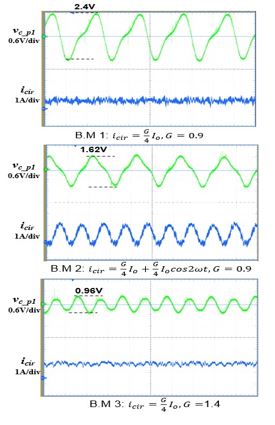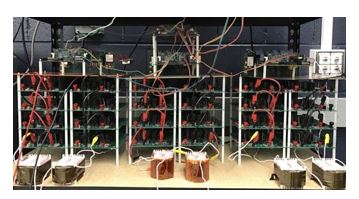
Fig.1. State-of-the-art waveforms
The modular multi-level converter (MMC) is the most prominent interface converter used between the HVDC grid and the HVAC grid. One of the important design challenges in MMC is to reduce the capacitor size. In the current practice, a rather large capacitor bank is required to store line-frequency related circulating energy, even though a number of control strategies have been introduced to reduce the capacitor voltage ripples. In the present paper, a novel control strategy is proposed by using harmonic injections in conjunction with gain control to completely eliminate both the line frequency and the second-order harmonic of the capacitor voltage ripple. Ideally, the proposed method works with the full bridge topology. However, the concept also works with half bridge topology with a significant reduction of line frequency related ripple.
To gain a better understanding of the nature of circulating energy and the means of reducing it, the method of state plane analysis is employed to offer visual support. In addition, the design trade-off between full bridge MMC and half bridge MMC is presented and a novel control strategy for hybrid MMC is proposed. Finally, the work is supported with a scaled down hardware demonstration shown in Fig.3.
Fig. 1. and 2 show the benefit of the proposed method versus the state-of-the-art to reduce the capacitors ripples.

Fig.2. Proposed control method

Fig. 3. Experimental Setup

























































































